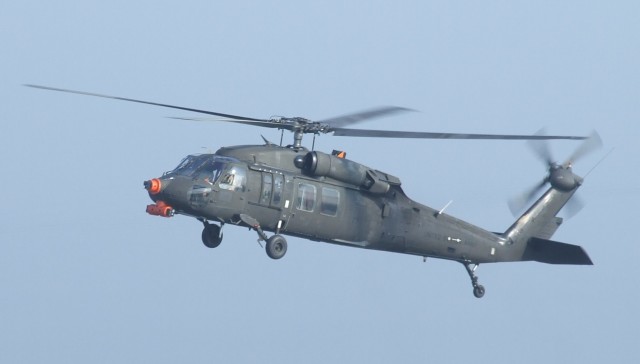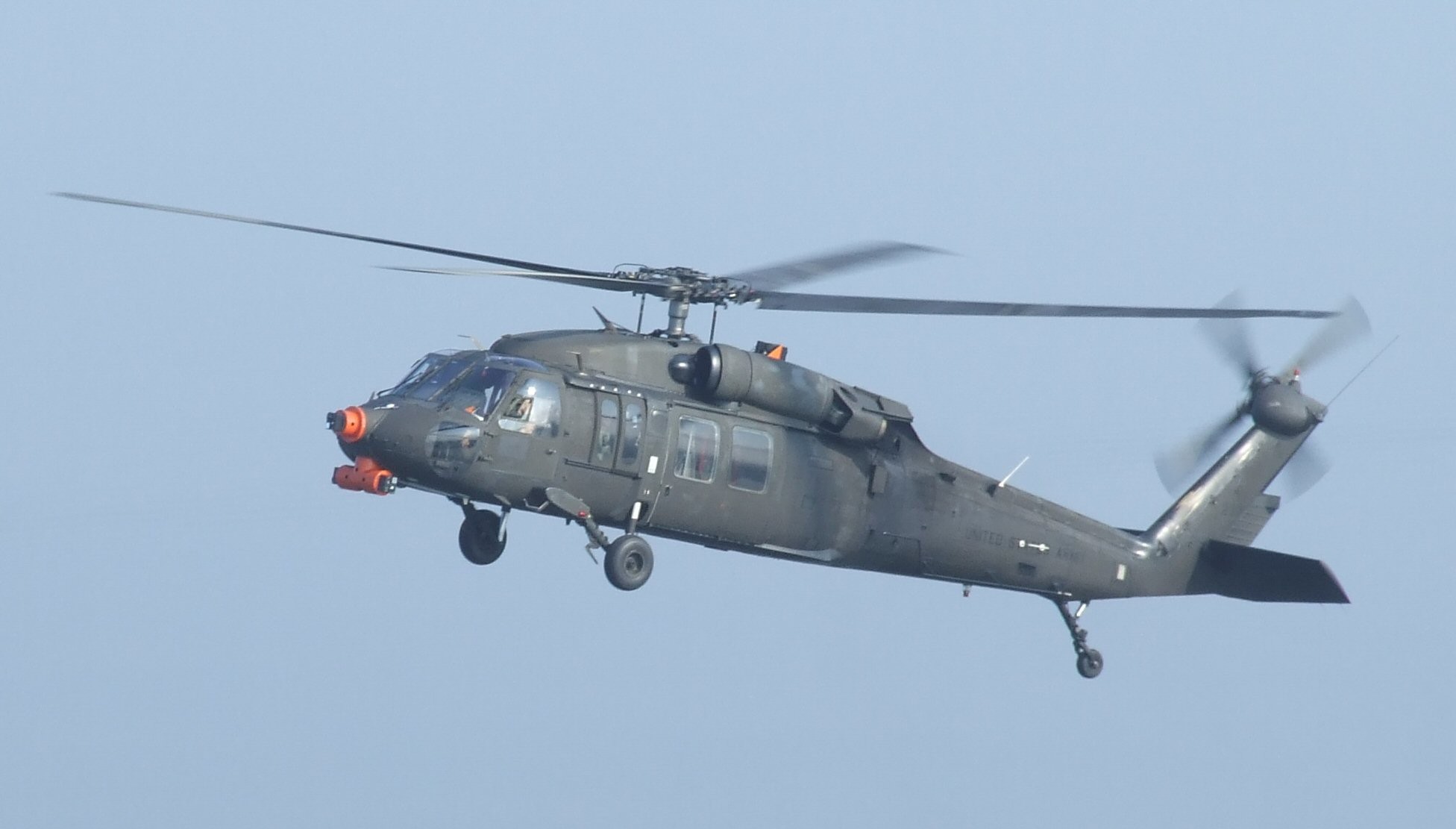
FORT BELVOIR, Va. -- Ever wonder what the view would be like from Wonder Woman's invisible jet'
Substitute the sleek comic book airplane with a uniquely modified Black Hawk helicopter, and one would have a good idea of the "see through" view pilots will have due to the work being done by a group from the U.S. Army Research, Development and Engineering Command's communication and electronics center.
Over the past year, the Communications-Electronics Research, Development and Engineering Center's Night Vision and Electronic Sensors Directorate has been working on the Advanced Distributed Aperture System, which gives aircrew superhero vision, enabling them to "see through" the helicopter.
"The ability to see through the cockpit infrastructure is pretty damn awesome," said Brig. Gen. Raymond Palumbo, deputy commanding general, U.S. Army Special Operations Command, during a recent flight demonstration. "Can you imagine having this on a Stryker, where you can see all around and hear each other'"
The ADAS is a multi-spectral day/night viewing system, consisting of six cameras mounted on the outside of the helicopter. The day/night imagery from each camera is processed and stitched together to provide aircrew members with an independent, unrestricted spherical view around the aircraft, thus improving situational awareness and allowing aircrew members to view objects and terrain with minimal or no structural limitation during operations.
Since the cameras are located on the outside of the aircraft, the images appear to "see through" the Black Hawk. Informational symbols from the helicopter instrument panel, called flight symbology, also provide heads-up pilotage and navigation data as an overlay to the multi-spectral imagery.
Each aircrew member views the thermal and near-infrared fused imagery as it is projected onto the visor of their Helmet Mounted Display. The HMD is continually tracked by an optical head tracker that allows the aircrew member to determine the imagery he sees by pointing his head in the desired direction.
Additionally, ADAS aims to reduce loss caused by brownouts. Brownouts occurs when a helicopter is landing and the rotorcraft's downwash throws dust, sand and other loose debris into the air, severely obscuring the pilot's view. The aircrew using ADAS can view pilotage and brownout symbology signifying where the helicopter is in relation to the ground. They can also look through the floor of the helicopter into the cleaner downwash allowing the aircrew to conduct safe landings during a dangerous brownout situation.
The night vision team has been working with several industry partners to develop the helmet display and multi-spectral sensors. One such effort is incorporating 3-D audio cueing and Active Noise Reduction technology into the helmet.
Similar to a bat's echolocation, the 3-D audio cueing distributes sound directionally so that auditory signals sound like they are coming from the direction of the source; this also provides separation for different channels of input, like threat alerts, radio traffic and aircrew dialogue. The 3-D audio is enhanced by ANR, which also minimizes the risk of hearing loss from noise exposure, reduces fatigue and stress during long missions and limits cockpit noise - thus enabling the aircrew to concentrate and work efficiently.
On a recent flight demonstration at Fort Bragg's Simmons Airfield, Col. Allen Chappel, ARSOC deputy chief of staff, G-8, stated, "I could tell what the pilot was doing without him telling me, which is incredible."
On a similar flight, U.S. Navy Senior Chief Petty Officer Chris Beck, Special Operations Command, said, "I can only compare it to being blind my whole life then suddenly seeing."
The ADAS team is working to add more features by next year. Features include missile and laser warnings, hostile fire indicators and passive aircraft detection.
The ADAS team is comprised of individuals and organizations from Department of Defense, the Office for the Deputy Under Secretary of Defense, USASOC, USSOC and RDECOM CERDEC NVESD. The test pilots are from RDECOM CERDEC NVESD and RDECOM Aviation and Missile Research Development and Engineering Center.
<p align="center"><a href="http://www.flickr.com/photos/rdecom/4645133402/" title="Researchers marvel at comic book power by RDECOM, on Flickr"><img src="http://farm5.static.flickr.com/4065/4645133402_0a148e7c59.jpg" width="500" height="333" alt="Researchers marvel at comic book power" /></a></p>
<p align="center"><a href="http://www.facebook.com/usarmyrdecom"><img src="http://farm5.static.flickr.com/4055/4427141402_3d3fef5a9a_o.jpg" alt="Fan us on Facebook!" border="0" hspace="2" width="25" height="25" /></a><a href="http://twitter.com/rdecom"><img src="http://farm3.static.flickr.com/2790/4426378671_8dd5a3dd82_o.jpg" alt="Follow us on Twitter!" border="0" hspace="2" width="25" height="25" /></a><a href="http://www.flickr.com/rdecom"><img src="http://farm5.static.flickr.com/4049/4427141382_2e32440518_o.jpg" alt="Contact us on Flickr!" border="0" hspace="2" width="25" height="25" /></a><a href="http://www.youtube.com/rdecom"><img src="http://farm5.static.flickr.com/4006/4426378659_8f234568f8_o.jpg" alt="Subscribe on YouTube!" border="0" hspace="2" width="25" height="25" /></a><a href="http://www.ireport.com/people/rdecom"><img src="http://farm5.static.flickr.com/4006/4426378639_88e42e9c6e_o.jpg" alt="We're on CNN iReport!" border="0" hspace="2" width="25" height="25" /></a><a href="http://www.linkedin.com/groups'gid=1978373"><img src="http://farm5.static.flickr.com/4051/4426378645_6de729478d_o.jpg" alt="Linkedin discussions!" border="0" hspace="2" width="25" height="25" /></a></p>
Related Links:
Research, Development and Engineering Command
Communications-Electronics Research, Development and Engineering Center

Social Sharing